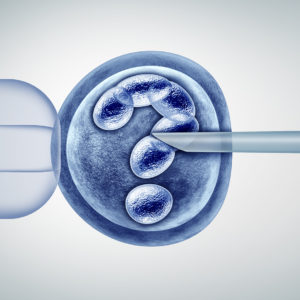“Rage against the dying of the light” Dylan Thomas urged in his famous poem. Bold medical entrepreneurs added perseverance to Thomas’ rage and got to work.
A breakthrough paper published recently in the Proceedings of the National Academy of Sciences shows that their disciplined rage is paying off. Longer lives can mean second and third chances, bolder long-term projects, and more time with those we love.
Because rage takes a toll, most of us reject it in favor of the calm we hope comes from accepting the inevitability of short lives. Cambridge scientist Aubrey de Grey suggests that this “pro-aging trance” limits our efforts to lengthen lives. The belief that short lives are inevitable becomes a self-fulfilling prophecy.
De Grey hopes that greatly lengthening the healthy lives of mice will convince the entranced of the possibility of greatly extending the healthy lives of humans. The “healthy” part matters, because few want added years if they are years of pain and disability in a nursing home. In their recent Proceedings of the National Academy of Sciences paper, George Church and his mainly Harvard team announced a major advance toward extending the healthy lives of mice.
Through gene therapy they were able to reduce significantly diseases of aging that shorten lives. They tested the effects of three promising genes applied individually and in different combinations. In their most successful trial, each mouse received a one-time injection of two of the genes that become part of cells by a well-known and safe viral insertion process. The mice achieved major improvements in kidney and heart function, and major declines in obesity and Type 2 diabetes.
Previously these diseases would be treated separately by different therapies that can create a variety of harmful side-effects. The new gene therapy is a breakthrough because it recognizes the interconnectedness of the diseases, treating all of them at the same time by a single injection, with no noted side-effects. In doing so, it treats the underlying common causes of aging that result in the superficially separate age-related diseases.
Church’s team will now try similar gene therapy with dogs. If they succeed, the first goal of Church’s Rejuvenate Bio startup is to make the therapy widely available to extend the lives of dogs. The next goal is to extend the lives of humans.
In related research, Harvard’s David Sinclair, with Juan Carlos Belmonte of the Salk Institute, used gene therapy to restore sight to blind mice. The therapy temporarily turned on three genes that did what many had thought was impossible — rejuvenate optic nerve cells in the retina. Sinclair and Belmonte founded the startup Iduna Therapeutics to bring this therapy to humans.
Though the recent research suggests that aging is not inevitable, some will reply that aging remains beneficial, whether inevitable or not. They will worry that longer lives increase over-population, until they realize that the U.N. predicts a declining world population by the end of this century. They will worry that the added years will be lived in boredom, until they realize how much remains to be understood, created and explored.
John D. Rockefeller reached the age of 97 and may have been the richest person who ever lived. But even he did not have enough years and money to pursue all the worthy projects he could imagine. One of his worthy projects was the Rockefeller Institute for Medical Research, which gave the best medical entrepreneurs well-funded labs and freedom from the duty to teach. It also gave them another crucial freedom: they could instantly pivot their research toward serendipitous discoveries arising from their trial-and-error-experiments.
Much later, medical entrepreneurs again used nimble trial-and-error adjustments, this time on chemotherapy cocktails, to achieve bold successes in curing childhood leukemia and Hodgkin’s lymphoma. Even more recently, others persevered in trial-and-error experiments to identify many promising longevity drugs and genes that extend the lives of yeast and mice. Now combinations can be tested, as in Church’s research to see which are most safe and effective in mice.
Soon combinations could be tested in humans. At a minimum, incremental progress is possible; at a maximum, we can achieve breakthroughs. We do not need to wait decades or centuries; the breakthroughs can happen in years.
Although the research advances of medical entrepreneurs such as Church and Sinclair are exciting, they should not lead us to passive optimism — longer lives are not inevitable. If we want the advances to continue and quicken, we must ponder what constrains medical entrepreneurs; what constrains the pursuit of serendipitous discoveries from nimble trial-and-error experiments.
But first we must wake up from the pro-aging trance and rage against the dying of the light. If we do not rage, we settle for death when life is possible.

